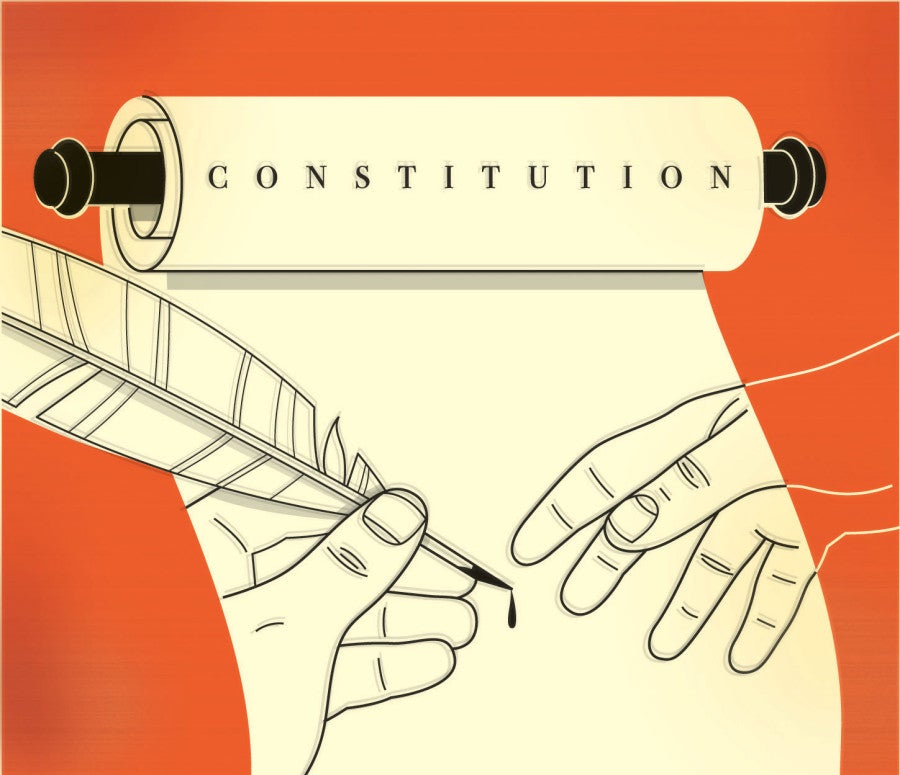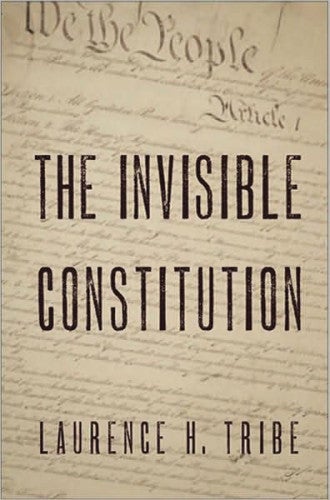
The U.S. Constitution is 219 years old now, and the revolutionary system of government it created has survived and spread across the globe. No wonder many Americans consider it an almost sacred document, the final say on governmental powers and individual rights.
But in a new book, “The Invisible Constitution” (Oxford University Press), HLS Professor Laurence H. Tribe ’66 argues that the reach and influence of the written Constitution is not as broad or conclusive as we think. On the contrary, Tribe writes, many of the bedrock principles Americans rightly consider constitutionally ordained are nowhere to be found in the document’s text. For instance, he writes, most educated citizens probably believe that the Constitution’s text forbids state secession from the union. It does not. That prohibition, Tribe explains, is written in blood on battlefields like Gettysburg, not in ink on parchment.
But the purpose of the book is not to expose such fallacies. Instead, Tribe explains how the real power of the Constitution rests in what we don’t see but nevertheless accept as “constitutional.” He argues that, despite the textual silence of the Constitution on many of the issues we believe it addresses, the unwritten beliefs we have come to accept are as binding as if they were spelled out in the text.
“The invisible Constitution undergirds and pervades what most people understand the Constitution to be,” he said in an interview. “When you look at the visible Constitution at the National Archives and draw the logical and linguistic inferences it supports, it doesn’t tell you very much about what matters in constitutional law.”
Tribe explains that the written Constitution “floats in a vast and deep—and, crucially, invisible—ocean of ideas, propositions, recovered memories, and imagined experiences.”
He suggests that this seemingly ethereal state of affairs may have been precisely what the framers had in mind. To Tribe, they appear to have purposely built a skeletal structure for future generations to build upon. This notion of the Constitution as framework for partisan activity may be troubling to many people, he admits. But he also believes it’s a reality that people need to recognize and embrace.

“The invisible Constitution is not simply a mask for imposing a particular ideology on the Constitution, which is what people sometimes think,” he said. “What I’m hoping is that people will come to see that we’re all engaged in the same game and that the political reality of the Constitution, which is not confined to a written text, is an equal-opportunity reality.”
As if to underscore his argument that the Constitution is not confined to the written text, Tribe offers diagrams in the book to illustrate his points. His drawing of a geodesic dome, for example, is made up of interlocking segments representing separate, invisible constitutional principles (such as “protecting free speech by making it harder to sue critics of public officials” and “rights to sue government agents who violate personal rights”) that align to form a protective shield around the core constitutional value of free speech.
The book, says renowned historian Doris Kearns Goodwin, “is so breathtaking in its originality and wide-ranging in its scope that it will become an instant classic.”
For Tribe, the upshot—whether revealed through text or diagrams—is that, if we look closely enough, the invisible Constitution is there for us to see. “Calling it something mysterious like an aura or a shadow does it injustice,” he said. “It’s a set of fundamental beliefs and traditions that operate in a binding way. It’s a living body whose existence is impossible to deny.”